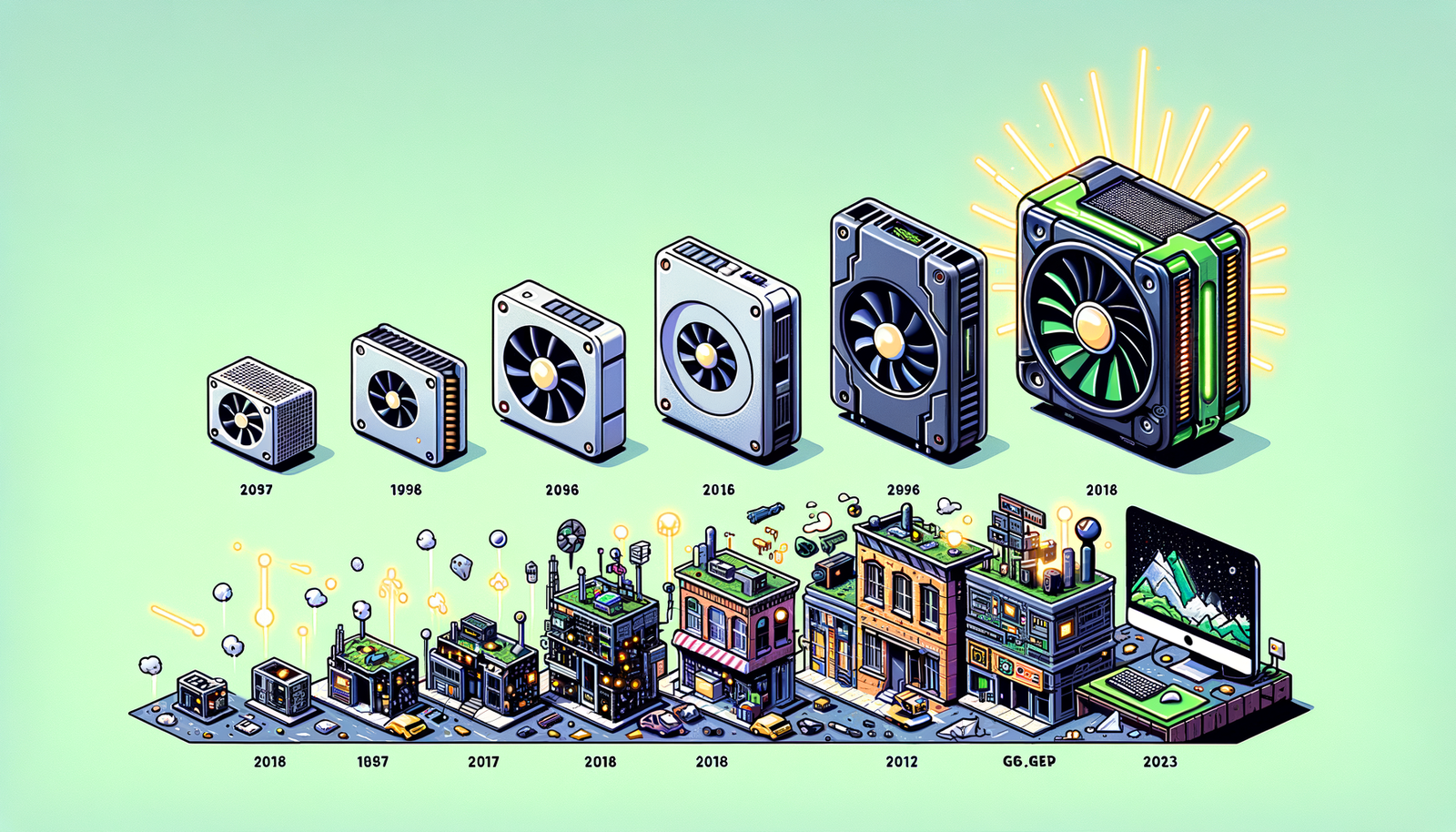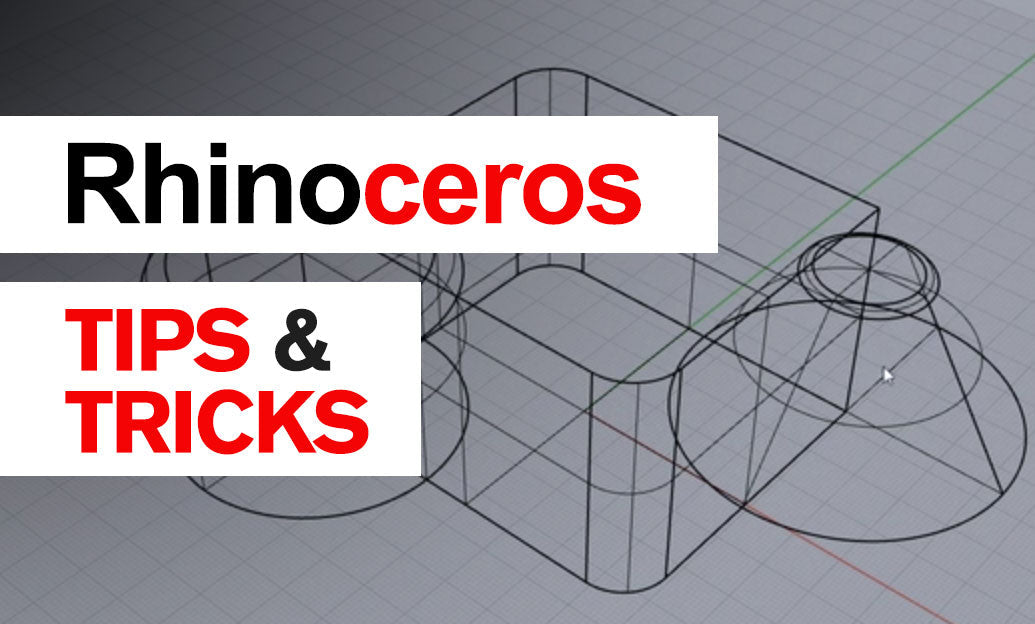Your Cart is Empty
Customer Testimonials
-
"Great customer service. The folks at Novedge were super helpful in navigating a somewhat complicated order including software upgrades and serial numbers in various stages of inactivity. They were friendly and helpful throughout the process.."
Ruben Ruckmark
"Quick & very helpful. We have been using Novedge for years and are very happy with their quick service when we need to make a purchase and excellent support resolving any issues."
Will Woodson
"Scott is the best. He reminds me about subscriptions dates, guides me in the correct direction for updates. He always responds promptly to me. He is literally the reason I continue to work with Novedge and will do so in the future."
Edward Mchugh
"Calvin Lok is “the man”. After my purchase of Sketchup 2021, he called me and provided step-by-step instructions to ease me through difficulties I was having with the setup of my new software."
Mike Borzage
Design Software History: The Evolution of GPUs in Transforming Design Visualization and Real-Time Rendering
October 17, 2024 5 min read


Introduction
The evolution of Graphics Processing Unit (GPU) technology has been a cornerstone in the advancement of computing, revolutionizing the way we process and visualize complex data. Originally designed to accelerate rendering of 3D graphics, GPUs have transformed from specialized hardware into versatile processors capable of handling a wide array of computational tasks. Their significance in modern computing cannot be overstated, as they enable high-performance rendering, support artificial intelligence computations, and power immersive virtual reality experiences. This immense computational capability has been particularly impactful in the realm of design visualization, where the demand for realistic, real-time rendering has grown exponentially.
Design visualization has always been a critical aspect of industries such as architecture, engineering, and entertainment. As designs became more complex, the requirements for visualization tools evolved, necessitating advancements in both software algorithms and hardware capabilities. Early design tools were limited by the processing power of CPUs, resulting in simplified models and slower rendering times. The integration of GPU technology addressed these limitations by offering parallel processing capabilities, which significantly enhanced rendering performance and visual fidelity. This synergy between GPU advancements and design software has paved the way for more sophisticated visualization techniques, enabling professionals to create and manipulate intricate models with unprecedented speed and accuracy.
Early Days of Graphics Computing
In the nascent stages of computer graphics, the landscape was vastly different from what we experience today. Prior to the emergence of GPUs, graphics computing relied heavily on Central Processing Units (CPUs) to handle rendering tasks. The computational demands of rendering even simple images were substantial, leading to slow and inefficient processes. One of the key developments during this era was the introduction of rasterization, a technique that converts vector graphics into a raster image (pixels or dots) for display on a screen. Rasterization allowed for more efficient image rendering by mapping images directly onto the pixel grid of display devices, which was a significant step forward from earlier vector display systems.
Early rendering techniques were rudimentary, often limited to wireframe models without shading or texture. The computational limitations meant that rendering detailed 3D models in real-time was virtually impossible. During this period, companies like Silicon Graphics, Inc. (SGI) played a pivotal role in advancing graphics technology. Founded by Jim Clark in 1982, SGI specialized in high-performance computing and developed workstations that were instrumental in 3D graphics processing. Their hardware and software solutions provided the foundation for many of the graphics techniques used in industries such as aerospace, automotive design, and animation. SGI's influence on 3D graphics was profound, as they pushed the boundaries of what was achievable with the technology of the time, setting the stage for future innovations in computer graphics.
GPU Technology Revolution
The transition from CPU-centric rendering to utilizing GPUs marked a significant revolution in graphics computing. GPUs were designed specifically to handle the complex mathematical calculations required for rendering images, particularly those involving 3D graphics. This specialization allowed GPUs to perform parallel processing on a massive scale, handling thousands of threads simultaneously. The shift to GPU rendering alleviated the burden on CPUs, enabling more intricate graphics processing without compromising overall system performance.
Key milestones in GPU development include the release of Nvidia's GeForce series and ATI's Radeon graphics cards. Nvidia's GeForce 256, introduced in 1999, was marketed as the world's first GPU, capable of performing 10 million polygons per second. This innovation brought hardware transform and lighting (T&L) to the consumer market, drastically improving 3D graphics performance. Likewise, ATI (now part of AMD) made significant contributions with their Radeon series, offering competitive alternatives and pushing the industry forward through continuous innovation. These developments accelerated the capabilities of real-time rendering, making high-quality graphics accessible to a broader audience.
The impact of GPUs on real-time rendering and visualization in design software has been transformative. Design applications in Computer-Aided Design (CAD), Computer-Aided Manufacturing (CAM), and architectural visualization leveraged GPU technology to enhance performance and visual realism. GPUs enabled designers to interact with complex models in real-time, facilitating more iterative and creative workflows. Advanced shading, texturing, and lighting effects became standard features, allowing for photorealistic renderings that were previously unattainable without extensive rendering times. This revolution not only improved efficiency but also expanded the possibilities for innovation across various design disciplines.
Current Applications and Future Directions
Today, modern design software extensively utilizes GPU technology to deliver high-performance computing and stunning visualizations. Applications like Autodesk's AutoCAD, Dassault Systèmes' SOLIDWORKS, and Unreal Engine's visualization tools harness GPUs to render complex models with high fidelity and responsiveness. These tools rely on the parallel processing power of GPUs to handle intricate simulations, real-time rendering, and interactive design modifications. The integration of GPU technology enables features such as real-time ray tracing, advanced shading models, and immersive virtual environments, which enhance the user experience and expand creative potential.
- Real-time Ray Tracing: GPUs now support ray tracing technologies that calculate light interactions in real-time, producing highly realistic reflections, refractions, and shadows.
- Virtual Reality (VR): GPU advancements have made VR applications more accessible, providing designers with immersive environments to evaluate and interact with their creations.
The intersection of machine learning and artificial intelligence (AI) with GPU capabilities has opened new avenues for design optimization. GPUs are particularly well-suited for the parallel computations required in training AI models. This synergy allows for the development of intelligent design tools that can automate routine tasks, suggest design improvements, and predict performance outcomes. For example, generative design algorithms use AI to create optimized models based on specific constraints and objectives, accelerating the innovation process.
Looking ahead, trends in GPU usage indicate a focus on further enhancing real-time rendering, virtual reality, and user experience. The advent of technologies like Nvidia's RTX platform has introduced hardware-accelerated ray tracing, significantly improving rendering speeds and visual quality. Additionally, the continued growth of VR and augmented reality (AR) applications relies heavily on GPU advancements to provide seamless and realistic experiences. The future trajectory suggests that GPUs will become even more integral to design software, enabling more complex simulations, deeper integration with AI, and fostering collaborative virtual environments.
Conclusion
The transformative impact of GPU technology on design visualization is a testament to the power of specialized hardware in advancing computational capabilities. GPUs have revolutionized the way we process and render graphics, shifting the paradigm from limited, CPU-bound rendering to expansive, real-time visualization. This evolution has empowered designers, engineers, and architects to push the boundaries of creativity and efficiency, resulting in more innovative and sophisticated designs.
The ongoing evolution of design software, driven by GPU innovations, promises further advancements in how we conceptualize and realize ideas. As GPU technology continues to advance, we can anticipate even more immersive and interactive design experiences, enhanced by real-time ray tracing, AI integration, and virtual reality environments. These developments will not only improve the tools available to professionals but also reshape the collaborative processes and methodologies within various industries. The future of design visualization is poised to be more dynamic and interconnected than ever before, propelled by the relentless progression of GPU technology.
Also in Design News

Cinema 4D Tip: Matrix-Driven Instancing for High-Performance Scattering
December 20, 2025 2 min read
Read More
V-Ray Tip: V-Ray Anisotropy Techniques for Brushed Metals and Hair
December 20, 2025 2 min read
Read MoreSubscribe
Sign up to get the latest on sales, new releases and more …



